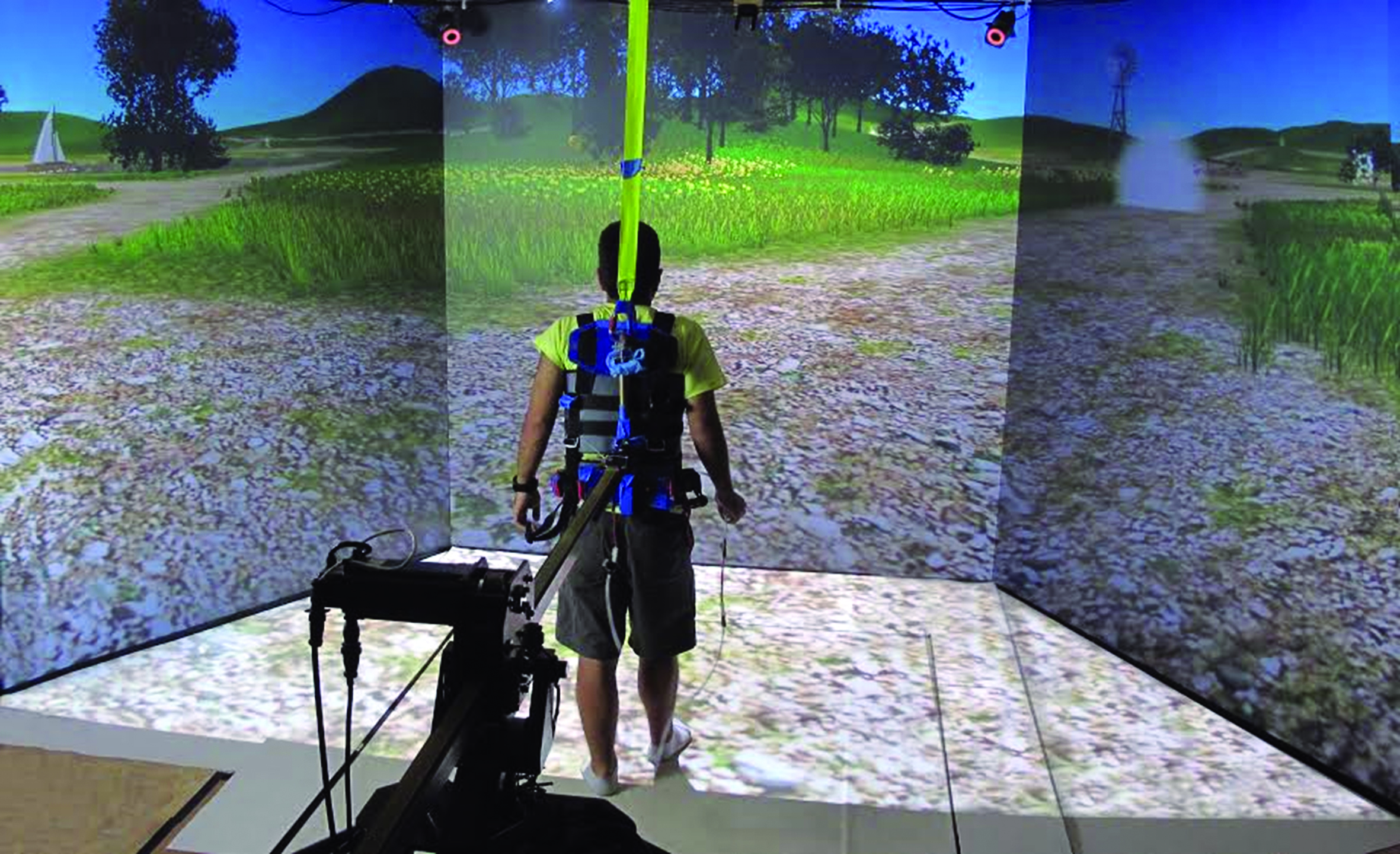

Overcoming Virtual Hurdles
A new virtual reality game has helped Parkinson’s disease sufferers keep walking without losing their balance, falling, or struggling to turn.
Author: Bill Keshlear
A new virtual reality game has helped Parkinson’s disease sufferers keep walking without losing their balance, falling, or struggling to turn. Over time, the incurable neurodegenerative disease restricts muscles more and more, limiting a person’s mobility and balance.
But a new technique developed by a research team at the University of Utah led by K. Bo Foreman, PhD, associate professor in Physical Therapy at the College of Health and director of the Motion Capture Core Facility, could change this trajectory. The VR game restored movement in 10 study participants who trained on the system three times a week for six weeks.

They believe the repetitive activity – walking, running, and turning on a treadmill as they hop over virtual objects on a cave-like screen in front of them – helped to keep their muscle memory active and ward off deterioration.
“The primary advantage is that they can encounter multiple obstacles while a safe environment is maintained using equipment such as a fall restraint tether,” Foreman says. “Participants enjoyed the experience and thought it was fun, not just exercise. They liked training and challenging themselves without the fear of falling.”
The virtual reality experience is projected onto a semi-circle-shaped wall facing the patient, who is on a wide treadmill. The patient wears a headset, shoes, and clothing with sensors on them. They are tethered to a pole behind them for control.
Some of the tasks seem more straightforward than others: walking straight through a field, for example, rather than jumping up onto the curb of a road. But the fusion of everything together forces patients to exercise various skills that can quickly become challenging, if not impossible, for people with Parkinson’s.
When we learn to walk, we become adept at nimbly switching from walking to running, from walking straightforward to walking diagonally to the right. We can speed up or slow down and step to the left or right, up or down.
Researchers are still working to fully understand how Parkinson’s restricts movement and gait. However, there is growing evidence that physical activity can stave off the decline.
Despite being much-hyped for its potential use in clinics, Foreman’s team believes VR is worth the fanfare. His team aims to expand their research to test the impact of the VR game on a larger group of people and to determine whether improvements last long-term. “We are hopeful that this improved performance relates to decreased falls in their everyday life,” Foreman said.
“Parkinson’s disease is a progressive disease, and anything we can do to impact the progression is a step in the right direction”
Bo Foreman
The team of University of Utah researchers used a “Cave Automatic Virtual Environment” designed and built at the U. It provides a wrap-around three-dimensional visual display, floor projection, a speed matching treadmill, and safety harness. The Treadport is made up of three projection screens and a seven-camera motion capture system. (Credit: University of Utah)